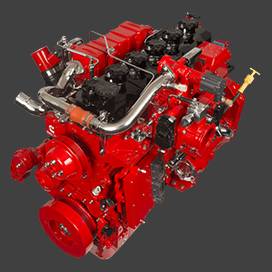Nov . 14, 2024 01:09 Back to list
how do brake drums work
How Do Brake Drums Work?
Brake drums are a critical component in the braking systems of many vehicles, particularly in older models and heavy-duty vehicles like trucks and buses. Understanding how brake drums work is essential for grasping the overall functionality of a vehicle's braking system.
At a fundamental level, brake drums operate on the principle of friction. They are cylindrical components that are attached to the wheel hub. When the driver presses the brake pedal, a set of shoes inside the drum is forced outward against the inner surface of the drum, creating friction. This friction slows down the rotation of the wheel and, consequently, the vehicle.
How Do Brake Drums Work?
When the brake pedal is pressed, hydraulic fluid from the master cylinder flows into the wheel cylinder, which is mounted inside the drum assembly. The wheel cylinder then expands, pushing the brake shoes outward. Unlike disc brakes that have a caliper and rotor, drum brakes use a simpler design that allows for a larger surface area, providing greater stopping power for the vehicle.
how do brake drums work

Brake drums can generate significant heat during operation, especially in situations where frequent stopping is required, such as in stop-and-go traffic or on steep inclines. This heat can cause brake fade, which is a reduction in braking effectiveness. To combat this, many brake drums have ventilation designs that help dissipate heat more efficiently.
One of the advantages of drum brakes is their ability to provide a strong stopping force without requiring as much force on the brake pedal as disc brakes sometimes do. This characteristic is particularly beneficial for heavier vehicles, as the brake system can be designed to manage higher loads. Additionally, drum brakes maintain effective braking performance under varying weather conditions, as the enclosing design helps to keep out dirt and moisture.
However, brake drums also have their drawbacks. They are generally heavier than disc brakes and can be more susceptible to thermal expansion and deformation under extreme conditions. Maintenance is crucial, as brake shoes need periodic inspection and replacement, and the drum’s inner surface must be kept smooth to ensure optimal performance.
In conclusion, brake drums are an integral part of many vehicles' braking systems, providing reliable and effective stopping power through the use of friction. Their design allows for a robust performance suitable for various driving conditions, although they do require regular maintenance to ensure longevity and efficiency. Understanding how brake drums work not only helps vehicle owners appreciate the complexity of their brake systems but also emphasizes the importance of regular vehicle maintenance and safety.
-
Scania Brake Drums: OEM Quality for Optimal Safety & Durability
NewsAug.16,2025
-
R.V.I: Advanced Remote Visual Inspection for Precision
NewsAug.15,2025
-
Discover HYUNDA: Innovative Vehicles, Equipment & Solutions
NewsAug.14,2025
-
R.V.I: Unlock Advanced Insights & Real-time Performance
NewsAug.13,2025
-
Kamaz Brake Drum: Durable & Reliable for Heavy Duty Trucks
NewsAug.12,2025
-
Heavy Duty Iveco Brake Drum - Premium Quality & Safety
NewsAug.11,2025
